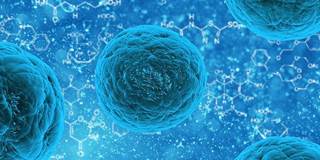More than six decades after the American baseball player Lou Gehrig died of amyotrophic lateral sclerosis, a degenerative disorder characterized by the death of the nerve cells that the brain uses to activate muscles, the disease remains incurable and fatal. But that may change with the advent of stem-cell and gene therapies.
LONDON – The American baseball player Lou Gehrig was known not only for his offensive and defensive skill, but also for never missing a game due to injury or illness. But, after 15 years with the New York Yankees, the 35-year-old Gehrig noticed that his strength and speed were deteriorating rapidly. His walk became a shuffle, and he started to struggle with simple tasks like tying his shoelaces. In 1939, after playing in more than 2,000 consecutive games, Gehrig quit baseball. Within two years, he was dead.
Gehrig suffered from amyotrophic lateral sclerosis (ALS), the most common motor-neuron disease (MND) – a degenerative disorder characterized by the death of the nerve cells by which the brain activates muscles to perform any activity, from swallowing to walking. More than six decades later, MNDs like ALS remain incurable and fatal.
With MNDs affecting one in 400 people, usually in middle or old age, efforts to change that are vitally important. Intriguingly, some of the most important insights into the causes of MND – and thus how it can be treated – have been gained through observations of natives of the remote Pacific island of Guam and Italian soccer players.

LONDON – The American baseball player Lou Gehrig was known not only for his offensive and defensive skill, but also for never missing a game due to injury or illness. But, after 15 years with the New York Yankees, the 35-year-old Gehrig noticed that his strength and speed were deteriorating rapidly. His walk became a shuffle, and he started to struggle with simple tasks like tying his shoelaces. In 1939, after playing in more than 2,000 consecutive games, Gehrig quit baseball. Within two years, he was dead.
Gehrig suffered from amyotrophic lateral sclerosis (ALS), the most common motor-neuron disease (MND) – a degenerative disorder characterized by the death of the nerve cells by which the brain activates muscles to perform any activity, from swallowing to walking. More than six decades later, MNDs like ALS remain incurable and fatal.
With MNDs affecting one in 400 people, usually in middle or old age, efforts to change that are vitally important. Intriguingly, some of the most important insights into the causes of MND – and thus how it can be treated – have been gained through observations of natives of the remote Pacific island of Guam and Italian soccer players.